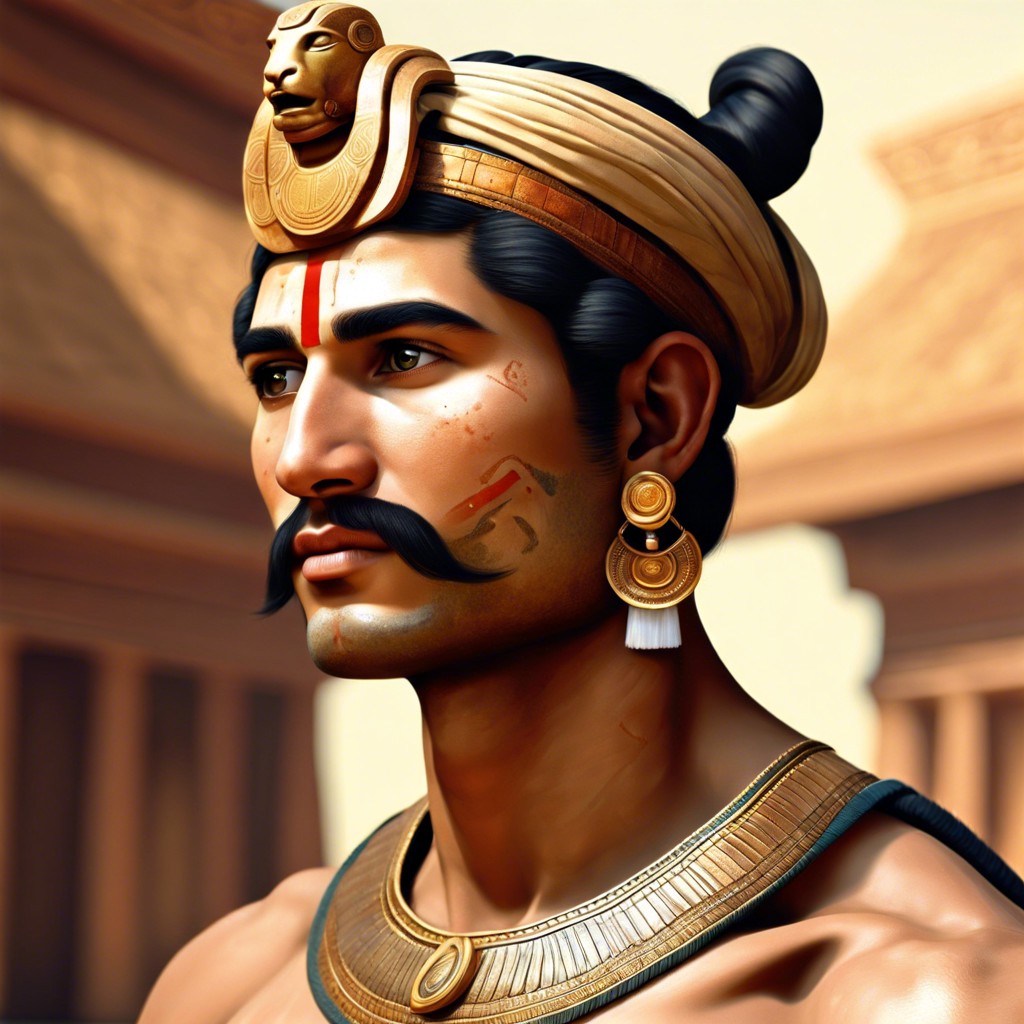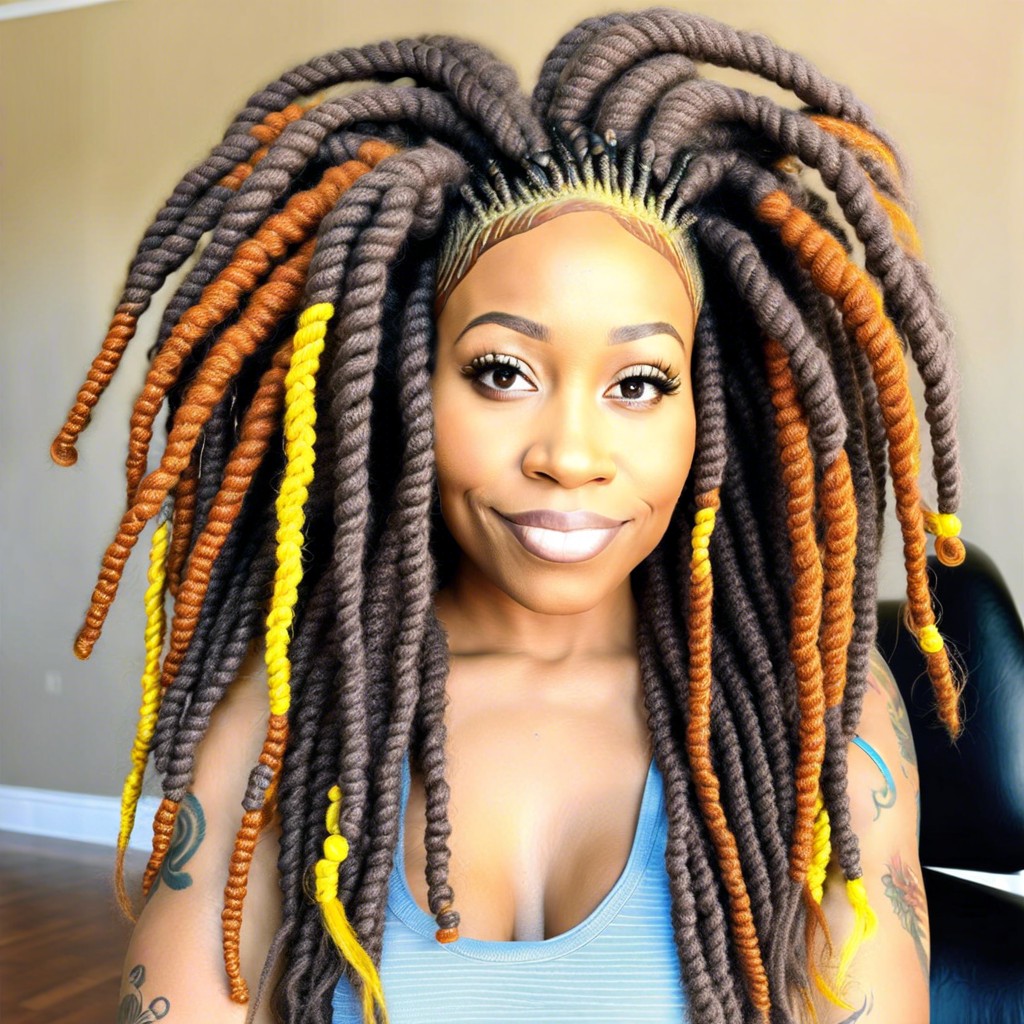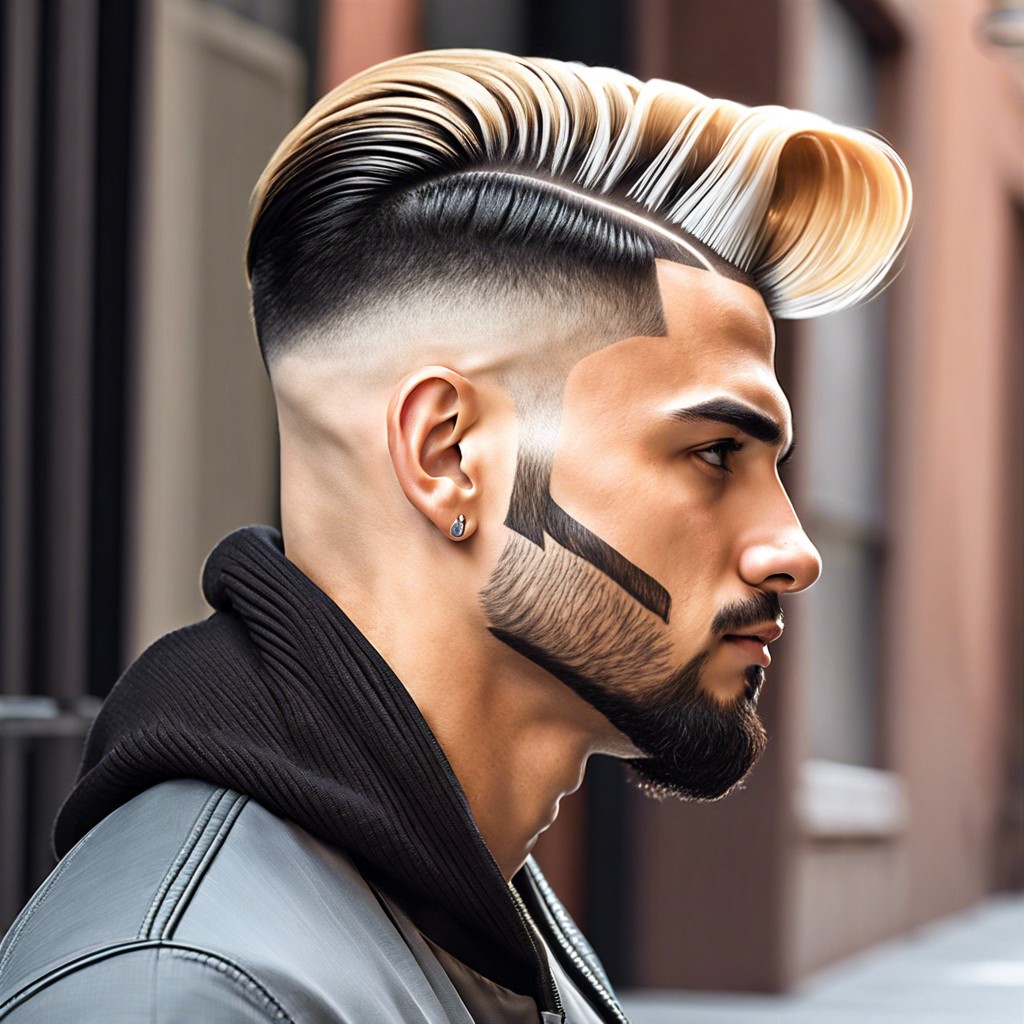Learn about the whimsical origins and evolution of the mustache, and uncover the furry truth about how this iconic facial hair came to be.
Ever wondered how a strip of hair above the lip became a global obsession? From ancient grooming rituals to dazzling the enemy on the battlefield, the mustache has a story richer than your favorite craft beer. This journey, sprinkled with historical flair and cultural zest, will whisk you through ancient pits, war zones, and artistic canvases, all leading to the glorious ‘stache we know today. Dive in – it’s hair-raisingly fascinating!
Key takeaways:
- Ancient civilizations groomed with tweezers and oils.
- Mustaches symbolized honor in ancient societies worldwide.
- Grooming tools evolved from shells to razors.
- Personal hygiene advances shaped mustache culture.
- Mustaches in history symbolized strength and rebellion.
Early Grooming Habits of Ancient Civilizations

Ancient civilizations were no strangers to grooming. Believe it or not, folks were pretty keen on keeping their facial hair in check way back when. Here’s how they did it:
- Ancient Egyptians used tweezers and sharpened flint blades. Phew, that’s dedication.
- The Greeks? They preferred to keep their beards long but meticulously trimmed. We’re talking about beard sculpting here.
- Romans were total grooming aficionados, utilizing razors, and even hair removal creams. Imagine dealing with that smell, yikes.
- Mesopotamians took it to a new level with oils and curling irons to style their beards and mustaches. Talk about fashion forward!
And there you have it. Grooming, ancient style.
Cultural Significance in Ancient Societies
From the pharaohs of Egypt to the warriors of ancient Greece, mustaches were more than just facial hair. They were symbols, badges of honor, and sometimes even mystical talismans. In ancient Egypt, for instance, the beard, including the mustache, was often seen as a sign of divinity. High-ranking officials would meticulously groom and dye their mustaches to keep that celestial vibe going strong.
Moving over to ancient Rome, a clean-shaven face was the norm… unless you were mourning. That’s right, Romans would grow out their facial hair, including mustaches, to signify grief, making it an emotional barometer.
The Vikings? They wore their mustaches like they wore their armor – proudly and fiercely. In Norse culture, a well-maintained mustache was a sign of virility and warrior status, striking fear into the hearts of their enemies with a well-curated, hairy lip shield.
And let’s not forget ancient China, where the mustache was a mark of wisdom and respect. Scholars often sported luxurious facial hair, hoping to look wise enough to solve the kingdom’s problems or at the very least, win a philosophical debate.
Basically, the ancients didn’t just sport mustaches for the sake of fashion; each groomed whisker echoed with cultural richness and meaning.
Development of Grooming Tools
Deep dive into ancient toolkits, and unveil the fascinating world of early grooming gadgets. Imagine the scenario: sharpened seashells and flint blades doing the work of a trusty Gillette. Razor-sharp sophistication, quite literally.
Fast forward to the Middle Ages – scissors and combs crawling into the scene. Picture a knight, armor-clad and meticulously snipping away for that gallant mustache twirl. Practical and chivalrous.
Leap ahead to the Renaissance. Craftsmanship meets grooming! Intricate grooming sets, often ornately decorated, becoming a gentleman’s essentials. Leonardo could sketch, but he probably had a monobrow like the rest of us without these tools!
Then came the 18th-century revolution. An age of invention wasn’t just steam engines. Enter more user-friendly razors and the birth of barbershops. Men no longer relied on dangerous weapons to maintain their facial finesse. Ah, progress!
And thus, the elegant evolution of grooming tools continued, shaping mustaches (and society) one snip at a time.
Evolution of Personal Hygiene
As humanity progressed, so did the obsession with cleanliness. Early humans, once content to revel in their natural musk, started seeking ways to spruce up. The quest for fresh breath and a dirt-free existence led to marvelous inventions like soap and combs.
Fast forward to ancient Egypt, and you’d find citizens meticulously plucking, shaving, and waxing. They even had tweezers. Grooming wasn’t just for comfort; it was a social status thing.
In Rome, the public baths were the center of social life, almost like the Starbucks of ancient times. People would gather, scrub off the grime, and pamper themselves. Not surprisingly, the mustache didn’t escape their attention either.
Meanwhile, in the East, intricate grooming traditions flourished. Samurai warriors paid as much attention to their facial hair as their combat skills. After all, a well-groomed warrior is a fearsome warrior.
The Renaissance didn’t just bring us art and questionable fashion choices; it also ushered in an era where facial hair styles became a statement. Mustache wax? It was practically a necessity.
Later, the Industrial Revolution made grooming more accessible. Mass-produced razors and grooming kits meant everyone could get in on the action.
Thus, advancing personal hygiene carved the way for the emergence and evolution of the mighty mustache.
Role of War and Military Styles
War has always been a fashion influencer, believe it or not. Militaries across the millennia have sported mustaches for more than just style. These facial badges of honor often signaled rank, bravery, and masculinity.
Victorian British soldiers, for instance, weren’t just fighting for Queen and country; they were also mandated to wear mustaches. Yes, it was an actual regulation. They believed it added a dash of fierce to their otherwise polite British demeanor.
Napoleon III of France took it a step further, practically demanding his soldiers embrace the mustache as a symbol of French glory. Because nothing says “I can conquer Europe” quite like some well-groomed facial fuzz.
And let’s not forget the Prussian military, where a mustache was almost as important as the sword. It wasn’t just about looks. It instilled a sense of discipline and unity among the troops.
So yes, next time you see a glorious mustache, remember it might’ve conquered more than just style points.
Religious and Ceremonial Influences
Ah, the mustache—the holy upper lip companion of the divine! In many cultures, facial hair grew beyond mere fashion; it became a sacred symbol. Ancient Egyptians reserved elaborate mustaches for their gods, believing that gods with mighty whiskers bestowed wisdom and protection.
In Sikhism, uncut hair, including the mustache, is a sign of respect for God’s creation. The mustache isn’t just hair; it’s a spiritual commitment. Meanwhile, in Hindu rituals, a mustache could signify the transition from boyhood to manhood, marking significant rites of passage.
Certain Native American tribes saw mustaches as channels for spiritual energy; they believed facial hair enhanced their connection to the spirit world. Now, picture a shaman with a mighty ‘stache, conjuring spirits with every twitch!
From divine wisdom to spiritual conductors, the mustache has always carried a profound, ceremonial heft. It’s not just about aesthetic—this hair comes with some serious spiritual cred.
Iconic Historical Figures and Their Mustaches
From the bushy grandeur of Friedrich Nietzsche’s philosophic whiskers to Salvador Dalí’s gravity-defying art-staches, history isn’t short on mustachioed icons, and boy, do they make a statement!
Consider the mighty mustache of Genghis Khan. As intimidating as his conquests, it was both a symbol of his fearsome leadership and a piece of manly ornamentation. Soldiers saw it as a mark of virility and strength.
Then there’s Tom Selleck in more recent memory. That thick, luxurious lip sweater didn’t just adorn his face, it became a defining feature of 80s cool. It showed that facial hair could leap off the battlefield and onto the TV screen, making an impact on pop culture.
And who could forget the great revolutionary, Che Guevara? His slightly unruly mustache represented rebellious individuality. It wasn’t just hair; it was an extension of his ideology, adding layers to his persona.
By examining these legendary upper-lip accessories from different eras, we see how mustaches served as more than facial comfort. They were badges of honor, defiance, and style. A simple strip of hair carrying significant historical weight.
Spread Through Trade and Exploration
As empires expanded and trade routes opened, cultural exchanges became the spice of life (and not just literally!). Traders and explorers, ever the trendsetters, often left their mark not just with spices and silks, but with their distinctive facial hair styles. Isn’t it wild to think that Marco Polo’s mustache might have been as influential as his journal?
Different regions had their own unique grooming styles. When they mingled, they didn’t just swap goods but also grooming tips. Imagine a Middle Eastern merchant bartering not only ceramics but also mustache grooming secrets with a European trader.
Explorers, seeking glory and new lands, often brought back more than gold and tales of adventure. Their facial hair styles, honed in harsh climates, became symbols of their daring journeys. Mustache maintenance tips traveled on the winds of change, thanks to these swashbuckling adventurers.
So, while spices and silk were hoarded by the elite, mustache styles were shared freely, sewing cultural threads tighter together one trim at a time.
Artistic Depictions and Their Impact
From the brushstrokes of Renaissance painters to the comic strips of the early 20th century, mustaches have adorned canvases and cartoons both regal and ridiculous. Artists often imbued their subjects with resplendent whiskers, turning facial hair into symbols of wisdom, power, and sometimes just pure whimsy.
Imagine Salvador Dalí without his famously flamboyant mustache. Impossible, right? His facial hair became his signature, blurring the line between art and artist.
Classic literature didn’t shy away from the mustache either. Ever notice how many dapper detectives sport one? Agatha Christie’s Hercule Poirot, with his meticulously groomed mustache, is a prime example. It became synonymous with his keen eye and razor-sharp intellect.
In modern times, pop culture’s love affair with mustaches hits crescendoes in everything from Gatsby’s Roaring ’20s glam to Marvel’s Tony Stark, giving a nod to the suave superhero persona. Each stroke of a pencil or flicker of film immortalizes the mustache, influencing style and swagger across ages.
Modern Interpretations and Legacy
Skipping ahead to the hip mustache scene, it’s fascinating what people are doing with facial fuzz today. The classic Handlebar mustache? Oh, it’s back and twirling with pride at every café. Whether rocking the Chevron for a rugged vibe or the Pencil mustache for a touch of class, contemporary gents are having a field day.
Pop culture’s also gone wild. Just think about the actors and musicians flaunting their elaborate ‘staches. It’s like facial hair has become the rockstar of personal style.
And social media? Total goldmine for mustache inspo. Influencers and everyday folks alike showcase their groomed greatness, creating trends and sparking the return of timeless styles.
Barber shops? They’re like artisanal mustache museums now, blending old-school craftsmanship with modern-day flair. It’s all about bringing the legacy forward with a touch of today’s swag.

